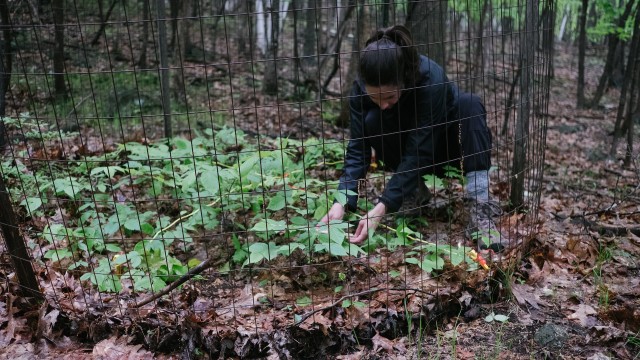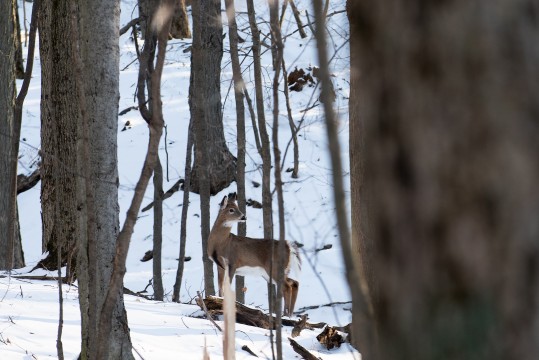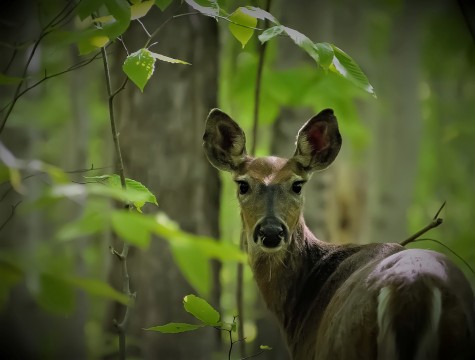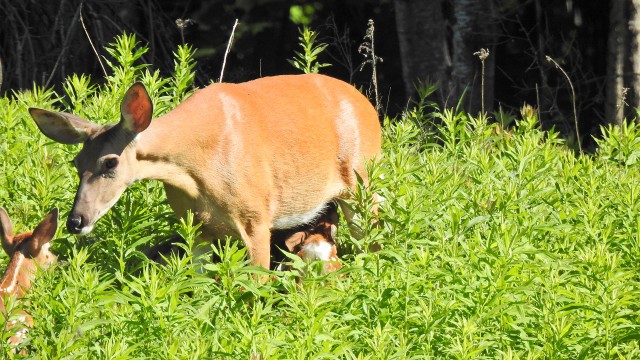The April showers have come, and the first spring ephemerals have begun flowering at the Reserve. Spring ephemerals such as the Eastern Spring Beauty (Claytonia virginica), Trout Lily (Erythronium americanum), and White Trillium (Trillium grandiflorum) are a welcome sight after a long winter. As the name suggests, these perennial plants emerge early in the spring and quickly flower and set seed before dying back to their root systems/bulbs.
This life-cycle strategy allows the plants to take advantage of the high amounts of sunlight before the trees grow leaves and shade the forest floor. By dying back to just their underground growth structures, spring ephemerals limit their exposure to being eaten by herbivores to just a few weeks of the year. However, during the weeks when the plants are growing and flowering, they represent an attractive meal to plant-eating animals such as deer.
Deer populations have seen large increases in recent years. As winters have become milder due to climate change, and natural predators such as wolves and cougars have been displaced by increasing urban development, the natural processes controlling deer populations have been diminished and deer populations throughout southern Canada have grown relatively unchecked.
The Gault Nature Reserve is no exception to this trend and researchers are working hard to quantify the Reserve’s white-tailed deer population using a network of wildlife cameras, helicopter surveys, and most recently, drone based thermal imaging. Current estimates suggest there are between 7.8 and 13 deer per km2. For reference, the number of deer that an eastern North American deciduous forest similar to that found at the reserve can sustain ranges from approximately 4 to 6 deer per km2, largely depending on the harshness of the winter.
Overpopulation of deer results in the over-browsing of plants at the forest floor, including the spring ephemerals. Here again, the Gault Nature Reserve is no exception. Researchers at the Reserve have been studying the effects of deer browsing for over a decade. Gault maintains a network of 32 deer exclosures and partner researchers, mostly at McGill, survey plants inside and outside of the exclosures. Focusing on White Trilliums as an example, researchers have found that not only are there fewer trilliums in deer browsed areas, but these plants are also significantly smaller.
Forest ecology is a complicated web of interactions and over browsing by deer can disrupt the strands of the web and the balance of these interactions. Over-browsing by deer has been linked to reduced songbird abundance due to decreased habitat, and to reductions in native plant species, which in turn makes room for deer-resistant invasive species such as European Buckthorn (Rhamnus cathartica) and Garlic mustard (Alliaria petiolate). Spring ephemerals are not just a pretty photo for hikers or a meal for hungry deer. These flowers also represent the food source for the first emerging pollinators. Some native insects will even base the location of their nests on the proximity to spring ephemerals. Consequently, the reduction in spring ephemerals can result in a decrease in native pollinators, which can in turn have cascading implications. So the next time you’re out on the trails, make sure to appreciate the flowers, before the deer do!





